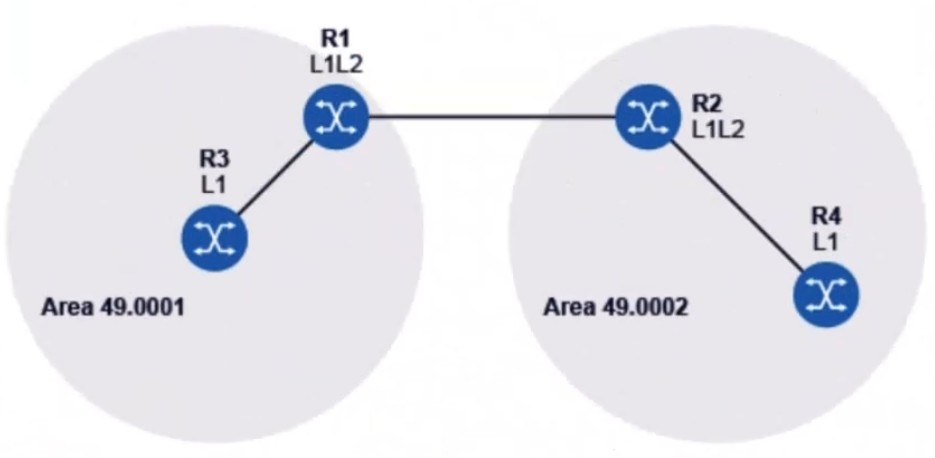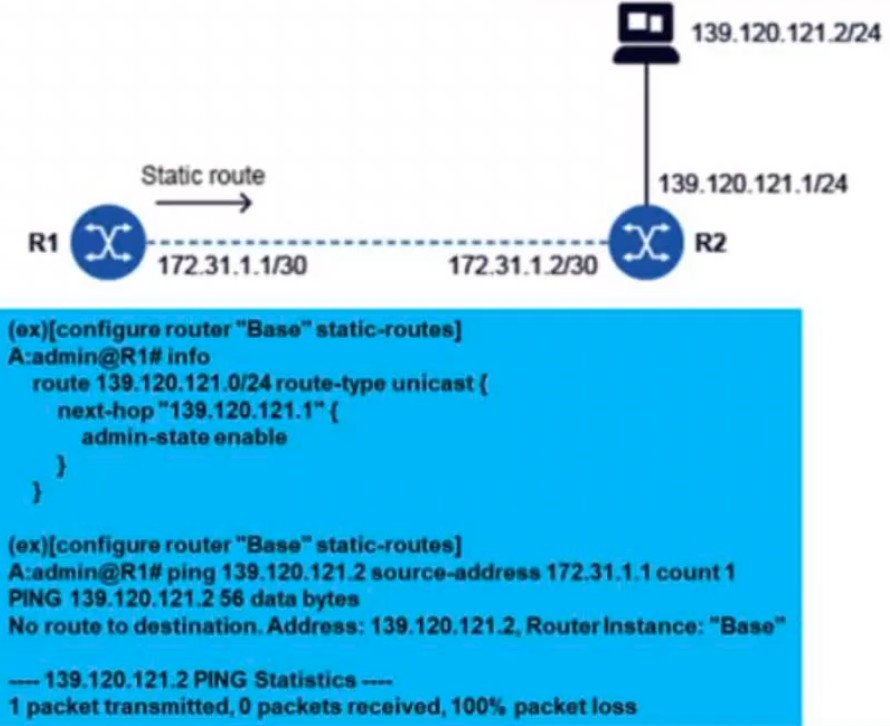Nokia IS-IS Routing Protocol 4A0-112 Exam Practice Test
Refer to the exhibit.

Which of the following statements best describes the IS-IS domain to which the command output corresponds?
Answer : D
The output shows two levels of IS-IS databases: Level 1 (L1) and Level 2 (L2). This indicates that the domain is multi-area, as L1 routers are confined to a single area, while L2 routers can route between different areas. The presence of Level 1/Level 2 (L1/L2) routers also suggests that the domain spans multiple areas.
The LSP (Link-State PDU) entries show L1/L2 ATT attributes, which typically indicate that these routers are capable of routing both within their own area (Level 1) and across areas (Level 2), suggesting a multi-area design.
The IS-IS domain likely includes broadcast interfaces, as indicated by the 'ATT' attribute (typically referring to the type of interface) and common IS-IS configuration practices on broadcast networks like Ethernet.
Which of the following is NOT a function of the control plane a router?
Answer : D
The data plane (or forwarding plane) is responsible for actually forwarding the data packets. It uses the information stored in the forwarding table to determine how to move packets from one interface to another toward their destination.
When a router performs the SPF calculation, which router is used as the root of the shortest path tree?
Answer : D
When a router performs the SPF (Shortest Path First) calculation, it uses itself as the root of the shortest path tree (SPT). This router computes the shortest paths to all other routers in the network, treating itself as the origin and calculating the paths based on its view of the network.
Refer to the exhibit.

Routers R1 through R4 in the diagram have established IS-IS adjacencies. Router R1 is L1/L2 and is the DIS of its two broadcast interfaces. How many LSPs will it generate?
Answer : B
Router R1 is configured as L1/L2, meaning it is part of both Level 1 and Level 2 IS-IS routing areas. This means R1 will generate two types of LSPs:
Level 1 LSP (for the local area 49.0001) to advertise its local topology to other Level 1 routers.
Level 2 LSP (for the backbone area 49.0002) to advertise the global network topology to Level 2 routers.
R1 also has two broadcast interfaces, and as the Designated Intermediate System (DIS) on these interfaces, it will generate an LSP for each interface (one per broadcast link).
This results in three total LSPs:
A Level 1 LSP for the local area (49.0001).
A Level 2 LSP for the backbone area (49.0002).
An LSP for each of the two broadcast interfaces, which may include interface-related topology information.
Refer to the exhibit.

A static route has been configured on router R1 to reach the PC at 139.120.121.2.
What might be causing the ping to fail?
Answer : C
In the configuration on router R1, the static route is defined with the next-hop IP address of 139.120.121.1.
However, the next-hop IP address 139.120.121.1 does not belong to the same subnet as the directly connected interface on R1, which is 172.31.1.1/30. For the static route to work properly, the next-hop IP address must be reachable via a directly connected interface, meaning it must be within the same subnet.
Therefore, this mismatch in subnet adjacency is likely causing the failure to reach the destination (139.120.121.2).
Which of the following statements about IS-IS is FALSE?
Answer : B
In IS-IS, routers are actually associated with interfaces rather than the entire router being associated with a single area. A router can have interfaces in multiple areas, and it is the interface's configuration that determines which area it belongs to.
A new router is added to a broadcast network. What does IS-IS use as the tiebreaker for selecting the DIS if the priorities are the same?
Answer : A
In IS-IS, the Designated Intermediate System (DIS) is responsible for certain tasks on broadcast networks, such as generating link-state advertisements and acting as the central point for flooding information.